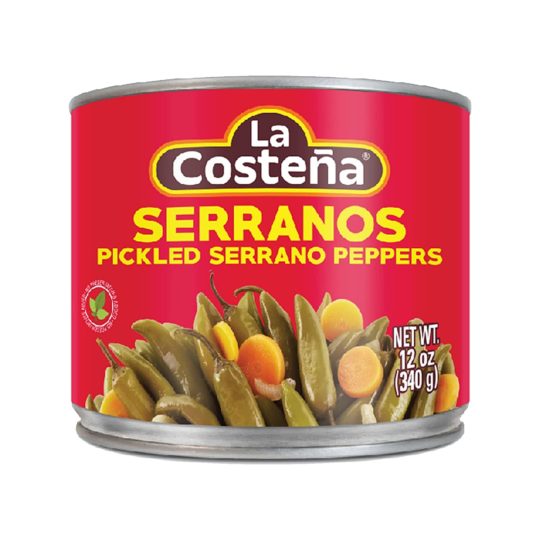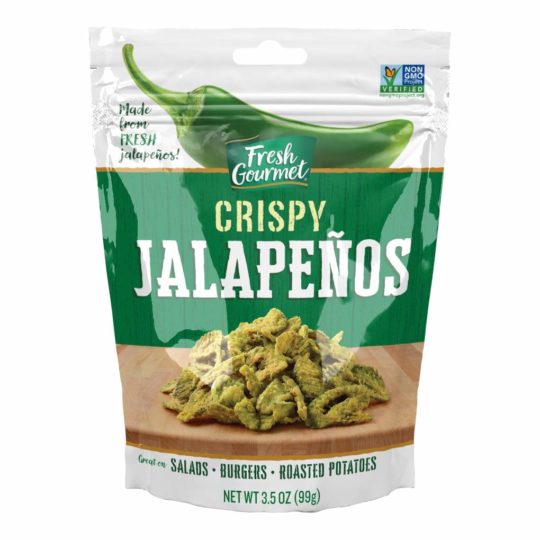Updated on April 9th, 2023
Some peppers, such as Thai chili Peppers, have a distinct scent that makes you feel as if a plume of smoke is about to escape your mouth mid-chew. Thai chili peppers are also known to be mouth-watering peppers and sweet chilies. They have a juicy, brilliant, and crispy feel.
Thai chili peppers are terrific in salsas, cocktails, stir-fries, soups, and just about any food or drink that needs an unexpected, delectable zing. So, yes! Throw a Thai chili pepper into a dish to provide the spice and intrigue you desire.
I must mention – the way their membranes scorch the back of your throat, or the way they provide a surprise taste to a meal when preserved, is quite addictive.
Remarkably, the option of hot-spicing your recipe isn’t only limited to Thai chili pepper. Read on to learn more about Thai chili pepper and its befitting substitutes in your recipes.
What is Thai Chili Peppers
Thai chili pepper is a variant of chili pepper from the Capsicum annuum species widely grown in Ethiopia and Southeast Asia. Notably, this pepper is a common ingredient in many Asian dishes.
Thai chili pepper is a descriptive term that refers to a variety of chiles grown in Thailand that seem to be similar in size, shape, and heat intensity. So there is no cause for confusion in the markets. The peppers are commonly labeled as Thai chile peppers.
Thai chile peppers come in various sizes and shapes, depending on the variety. They’re typically small, conical, and slender – with a smooth, taut, waxy skin that ripens from green to bright red when fully mature.
They’re usually cooked whole after being damaged and broken so that their heat can flavor whatever cuisine they’re cooking with, giving it a spiciness as well as a brilliant coloring.
You can come across Thai chili peppers in both fresh and dried forms. Suppose fresh chilis aren’t accessible around you. In that case, I believe the dried Thai chilis are more commonly available and provide the same spice level in Thai cooking.
Thai Chili Peppers Uses in Recipes
Thai chili pepper imparts a distinct fiery flavor to cuisine, with hints of sweetness, spicey, and smokiness. As a result, you can use it in a wide range of meals. Take a look at this list to see how Thai chili peppers are used in cuisine.
- Chili pepper jam
- Chili Pepper chicken
- Spicy Thai noodles
- Homemade Asian sauce with Thai peppers
- Thai sweet chili sauce
- Spicy Thai chili pepper ramen with shrimp
- Chili paste
- Tom Yum soup
- Thai Basil chicken
- Thai roasted chili
- Sugar-free sweet chili sauce
- Spicy Thai salad
- Thai red curry paste
- Coconut shrimp curry
- Peri-Peri shredded chicken tacos
Thai Chili Peppers Substitutes
Notably, Thai chili peppers – both dried and preserved – are widely accessible in shops since they are essential in many traditional Asian dishes. But what do you do if they’re not ready or available? Or maybe you fancy something new and quite different.
Can you think of anything you can use as a Thai chili pepper substitute – both in terms of flavor and intensity – to get your meal as near to the recipe as it calls for a Thai chili substitute?
Let us look at some of the finest options for keeping your dish spicy and tasty.
Serrano Pepper
Serrano pepper is a good substitute for Thai chili pepper. But you must note that it is slightly spicier and is collected while still green.
Soranno pepper is one of the hottest chilies on the market, yet it has a milder flavor. This pepper is popular in the Southwest, but they’re also available in other marketplaces. Although it is not as well-known as Thai chili pepper, Soranno pepper is commonly utilized.
In addition, since peppers have different heat levels, make sure to adjust the heat in your dish.
Notably, these 2-inch-long peppers are simple to manage and cut, and they go well with a variety of Thai cuisines. For example, Serrano pepper is a thick-fleshed pepper that’s rarely dried, so that you can look for them at your local supermarket.
Cayenne Peppers
Cayenne chilis can be used in place of Thai chili peppers in your recipe. These chilis are a staple in sauces and salsas and preserved and dried forms, and they immediately heat a dish with only a small amount.
Cayenne peppers aren’t as generally available as Thai chili peppers. Still, they’re the closest thing to them in terms of intensity if you can find them.
Though, this pepper isn’t as hot as Thai chili pepper. Cayenne has a rather comparable flavor and a lot of versatility. While the cayenne pepper packs a decent medium-heat punch, its overall flavor is muted.
Aside from the intensity, Cayenne – like Thai chili pepper – doesn’t overpower other flavors in a meal. Moreover, Cayenne pepper has this versatility that gives you much control.
Jalapeno
Jalapeno is one of the most commonly utilized chili peppers. It is a smooth, dark green, or red chilies that range from medium to very intense. This pepper is popular worldwide and is widely utilized in Mexican cuisine.
Notably, Jalapeno is nutrient-dense and offers numerous health advantages, making them a favorite substitute for Thai Chili pepper in a recipe that calls for it.
Thai pepper has a wide range of heat levels, ranging from 50,000 to 100,000 Scoville Heat Units. Compared to a regular jalapeno pepper, which has a Scoville Heat Unit range of 2,500 to 8,000, the average Thai pepper is around 15 times hotter than the average Jalapeno.
Therefore, you need to consider this when substituting Jalapeno for Thai chili pepper in your recipes.
Frequently Asked Questions (FAQs)
Which is the hottest Serrano or Thai Chili?
Serrano peppers, like cayenne pepper, provide a moderate kick, although it’s usually half the intensity (10,000 to 23,000 Scoville units). Notably, when in their hottest state, Serrano peppers are four times sweeter than the hottest Thai chile you have ever had.
Is Thai chili hotter than habanero?
Thai peppers are typically three times less fiery than habaneros. So if you’re just getting started with hot peppers, Thai chili pepper is a smart option over habaneros.
What type of pepper is a Thai chili?
It’s a chili pepper variant from the Capsicum annuum species popular in Ethiopia and Southeast Asia. It’s a common ingredient in many Asian dishes.
Conclusion
Thai chili pepper is one of the most commonly used cooking ingredients in the Asian marketplace. And it is well-deserving of the appraisal of the spice in recipes.
However, you may need to try out some excellent alternatives in some recipes that call for Thai chili pepper. Furthermore, you don’t want to get stuck when you have Thai chili pepper on hand. These options are good for you too.
Notably, these substitutes will alter the flavor and taste of your cuisine, but that’s not a bad thing at all.




